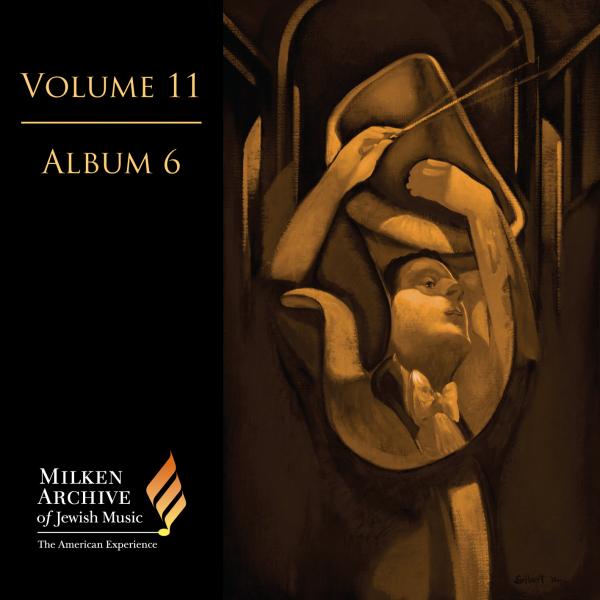Tracks
Liner Notes
William Schuman's Judith is also available in our Spotify channel.
The story and character of Judith—perceived as one of the great legendary Jewish heroines of antiquity—belongs not to the Bible, but to the corpus of extra-biblical literature known as the Apocrypha (lit., hidden away), or the books of the Apocrypha. These books pertain to aspects of Jewish life, events, and historical legend during the era of the Second Temple. The apocryphal books are also known in talmudic literature as s’farim ḥitzonim (outside books), since they were not included in the canon of books that became the Hebrew Bible and thus fall “outside” it. They are also known as k’tuvim aḥaronim (later writings), inasmuch as they were formulated after the era of Ezra the Scribe, at a time when prophetic revelation is considered to have ceased.
William Schuman’s ballet score Judith: Choreographic Poem for Orchestra was composed in 1949 at the request of the celebrated dancer Martha Graham, with whom he had collaborated two years previously on the ballet Night Journey. Following Night Journey’s production in 1947, Schuman expressed his concern over the dearth of new music for modern dance:
I have long been convinced that modern dance suffers from the insufficient tonal resources its limited budgets permit. For this reason the music for modern choreography often sounds inadequate and places modern dance at a disadvantage when compared with the musical resources usually available to ballet companies.
Thus, when the Louisville Philharmonic Society commissioned a solo work from Graham in 1949, she asked Schuman to compose the score, and the work was premiered by the Louisville Orchestra in 1950.
This story of repulsed foreign oppression and aggression combines feminine Jewish heroism, daring, and even revenge. An Assyrian army under General Holofernes has besieged the Israelites and cut off their water supply. Judith, a deeply religious widow, determines to free her people by using the only weapon available to her, her beauty and feminine charms, and she beseeches God to allow the enemy to be smitten by her ruse—through “the deceit of my lips.” She decks herself out in seductive clothing and paraphernalia, gains entry into the enemy camp, and eventually appears in Holofernes’s tent, where she succeeds in causing him to become infatuated with her and to let down his guard. After he has become inebriated during an evening of revelry (having “drunk more wine than he had drunk on any one day since the day of his birth”), she seizes the opportunity to behead him. She carries his bloody severed head back to her people—not only as a trophy (“The Lord has smitten him by a woman’s hand!”) but also as a symbol of the victory that can now be theirs and as a catalyst for their uprising. Indeed, they are emboldened to rout the enemy and cause its retreat, securing victory.
Over the centuries, the story of Judith has inspired numerous musical expressions in various genres and media. The oratorio by Honegger and this ballet are two of the best known and most dramatic.
Schuman’s Judith comprises five uninterrupted sections, corresponding to five scenes when choreographed. They are united by common musical material stated in the opening passages of the first section. The suffering of the weakened, water-deprived Israelites is suggested at the outset by the stark, foreboding Adagio—primarily with hushed strings, but supplemented by introductions of solo woodwind and then biting brass passages. In the Moderato section, while Judith readies herself to embark for the enemy camp, the intensity and tension build in the orchestra, anticipating the danger facing her as well as her resolve. Tightly knit counterpoint in the strings—eventually punctuated by brass chords in exciting jazz-inflected polyrhythms—accompanies her descent to the Assyrian military encampment. There follows an extended tranquil section for accompanied solo oboe (“She stayed in the camp three days . . . asking God to guide her [to Holofernes]”), suggesting calm resoluteness as she patiently awaits her opportunity without giving herself away, and concluding with solo violin in a brief series of fifths. Agitated timpani announce the wild scene in Holofernes’s tent, commencing with accelerating pizzicato passages in the strings and marked “Presto” in the score. The frenzied climax features brass and timpani, with staccato brass chords depicting the beheading. Pulsating solemnity in the orchestra, rather than victorious music, accompanies Judith’s procession from the camp with Holofernes’s head in her hands. But her ultimate triumph and that of her people is underscored as the music builds to a glorious conclusion with a coda in major.
Credits
Composer: William SchumanPerformers: Gerard Schwarz, Conductor; Seattle Symphony
Additional Credits:Publisher: Associated Music Publishers, Inc.
